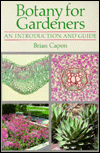College of Micronesia-FSM
Division of Natural Science and Mathematics
SC 250 Botany Outline
| Course Title |
Number |
Division |
| General Botany w/lab |
SC 250 |
Natural Science and Mathematics |
Course Description
Introduces the study of structure, function, and evolution of plants, their
relationship to the environment and to humans.
| Course Prepared by: |
Dana Lee Ling |
State: |
National Campus, Pohnpei |
Structure
|
Hours Per Week |
|
No. of weeks |
|
Total Hours |
|
Semester Credits |
| Lecture/Discussion |
3 |
x |
16 |
= |
48 |
|
3 |
| Laboratory |
3 |
x |
16 |
= |
48 |
|
1 |
| Workshop |
|
x |
|
= |
|
|
|
|
|
|
|
|
Total Semester Credits |
|
4 |
Purpose of Course
| Degree requirement |
|
| Degree elective |
X |
| Certificate |
|
| Other |
|
Prerequisite Course
SC 120 or MR 120 or instructor's permission
Signatures
Chairperson, Curriculum Committee: ________________________ Date: _______________
President, COM-FSM: __________________ Date: _________________
- Course Objectives
- General Objectives
- Develop knowledge of the life cycle, reproductive, structural, chemical, evolutionary,
and anantomical characteristics of photsynthetic and fungal phylla.
- Acquire a basic knowledge of plant physiology, plant ecology, and ethnobotany.
- Acquire an understanding of the importance of plants in our daily lives.
- Learn the diversity and classification of plants.
- Understand the interrelationships of plants and their environment.
- Identify local botanical species.
- Enhance environmental understanding and awareness
- Specific Objectives: 70% mastery. Students will be able to...
- List cultural uses of plants globally
- List cultural uses of plants locally
- Distinguish between public knowledge plant medicine and private knowledge plant medicine
- Describe the characteristics that make each of the five plant kingdoms unique and
distinct
- Place an organism into the correct kingdom give the characteristics of that organism
- Identify local plants by local name in the field
- Identify local plants by latin binomial in the field
- Explain the evolutionary differences that characterize each phylla
- Explain the nature of the biologically important evolutionary developments that allow a
given phylla to more effectively compete for limited resources than more primitive (or
advanced) phylla.
- Sketch the generic life cycle for each phylla
- Sketch an inflorescence with the parts correctly labelled
- Label the vegetative and structural parts of plants.
- Explain the process of photosynthesis including inputs and outputs
- Write out the key function(s) of major plant hormones
- Grow and propagate a plant
- Produce herbarium pages, either real or virtual (online) pages.
- Course content
- Ethnobotany
- Five Kingdoms
- Kingdom Monera: Cyanophyta
- Kingdom Protista: Primarily Unicellular Organisms
- Chrysophyta
- Pyrrhophyta
- Rhizopoda
- Apicomplexa
- Euglenophyta
- Ciliophora
- Kingdom Protista: Primarily Multicellular Organisms
- Algae
- Division Chlorophyta
- Division Phaeophyta
- Division Rhodophyta
- Protists Resembling Fungi
- Division Myxomycota
- Division Acrasiomycota
- Division Oomycota
- Kingdom Fungi
- Division Zygomycota
- Division Ascomycota
- Division Basidiomycota
- Lichens
- Kingdom Plantae: Division Bryophyta (Bryophtes)
- Class Hepaticae
- Class Anthocerotae
- Class Musci
- Kingdom Plantae: Seedless Vascular Plants
- Division Psilotophyta
- Division Lycophyta
- Division Sphenophyta
- Division Pterophyta
- Kingdom Plantae: Gymnosperms (Exposed Seed Plants)
- Division Cycadophyta
- Division Ginkgophyta
- Division Coniferophyta
- Division Gnetophyta
- Chapter 9 Kingdom Plantae: Angiosperms (Enclosed Seed Plants-Flowering Plants)
- Division Anthophyta
- Growth:Cells and Seeds
- Growth:Roots and shoots
- Organization: Stems
- Organization: Roots and leaves
- Adaptation: Protection
- Adaptation: Needs
- Functions: Growth and Development
- Functions: Waters, minerals
- Photosynthesis
- Term Project: Three virtual herbarium pages
- One plant not previously done (15)
- One plant that has cultural significance (20)
- One plant that was previously done (10)
- Live Plant returned healthy with sketchbook including:
- Full life cycle diagram as observed by you
- Notes how to propagate plant
- Notes on what the plant needs to grow
- Notes on its response to fertilizer
- Notes on whether it prefers sunshine or shade
- Notes on whether it prefers to be wet or dry
- Drawings should include measurements of size
- Identification of the plant (Genus species and local name if any)
- Plant should be healthy, vigorous, growing robustly
- Final examination
- Textbooks
- Botany
for Gardeners, Brian Capon ($17.95).

- A
Photographic Atlas for the Botany Laboratory, Kent Van de Graff ($20.95).

- Required course materials
- Reference materials
- Instructional cost
- Methods of instruction
- Lecture, discussion, laboratory, field trips, reports, projects
- Evaluation
- Attendance policy
- As per current COM-FSM policy in current catalog
Sources
Kapi'olani Community College
Gordon College
University of the Rio Grande
Palomar College
Valdosta State University
Community College
of Rhode Island
Pacific Union College
Jigsaw

